Remington .45 ACP 1911 Pistol, 3.5" Barrel, Night Sights, Black – R96493 For Sale
$1,191.99
The Remington .45 ACP 1911 Pistol, model R96493, is a compact and powerful firearm from the Model 1911 R1 Ultralight Executive series, designed for those seeking reliability and concealability. Weighing only 28 ounces, it offers significant .45-caliber stopping power in a small package. Its 3.5-inch barrel achieves a balance between accuracy and maneuverability, complemented by a sleek black finish for a modern look. The pistol features advanced night sights for excellent visibility in low-light conditions and a radius-curved frame for optimal concealment. With enhancements for precision, the Remington R96493 is a performance-oriented choice for anyone needing a dependable and easily concealable firearm.
Did Remington make a 1911?
Yes, Remington did make a version of the 1911. During both World War I and World War II, Remington produced the M1911 and M1911A1 pistols for military use. Additionally, in more recent years, Remington reintroduced the 1911 as part of their commercial handgun lineup.
How much was a 1911 pistol in 1911?
In 1911, a Colt M1911 pistol was priced at approximately $15 to $20 for the military contract models.
Is 45 ACP a good caliber?
Whether the .45 ACP is a good caliber depends on its intended use and personal preference. The .45 ACP (Automatic Colt Pistol) is renowned for its stopping power and is a popular choice for self-defense, law enforcement, and military use. It has a larger bullet diameter and heavier bullet weight than many other calibers, which contributes to its effectiveness in stopping threats. However, it typically has a lower magazine capacity due to its size and can produce more recoil, which might not be ideal for all shooters.
For home defense and personal protection, many appreciate its stopping power. However, for beginners or those more sensitive to recoil, it might not be the best choice, as it can be trickier to handle compared to smaller calibers like the 9mm.
Ultimately, the choice of caliber should take into account factors like the intended use, shooter skill level, and personal comfort with recoil. It’s often recommended for shooters to try different calibers to see what feels best for them.
How many bullets does a 1911 45 hold?
A standard 1911 chambered in .45 ACP typically holds 7 rounds in the magazine, plus one additional round in the chamber, for a total of 8 rounds. However, some modern versions and extended magazines can hold more.
What 1911 does the FBI use?
The FBI uses a variant of the 1911 pistol known as the Springfield Armory Professional Model, which is part of the Custom Professional line. This version of the 1911 was adopted by the FBI’s Hostage Rescue Team and SWAT team members due to its reliability and accuracy.
When did Remington stop making handguns?
Remington Arms stopped manufacturing handguns in 2020. The company, which filed for bankruptcy that year, sold off its assets, including its handgun lines, as part of the bankruptcy proceedings.
How much was $100 worth in 1911?
In 1911, $100 would have had the equivalent purchasing power of approximately $3,000 to $3,500 in today’s money, adjusting for average inflation over time. This is a rough estimate and can vary slightly depending on the specific inflation rate used and the methodology for calculating historical purchasing power.
What is so special about a 1911 pistol?
The 1911 pistol is renowned for several reasons:
1. **Historical Significance**: Designed by John Browning, the M1911 was adopted by the U.S. military in 1911 and served as the standard-issue sidearm for the U.S. Armed Forces from 1911 to 1985, playing a significant role in both World Wars and other conflicts.
2. **Design**: Its design was revolutionary at the time, offering a semi-automatic, .45 ACP caliber handgun with a single-action operation. Its design has influenced countless firearm models and is still considered mechanically efficient.
3. **Reliability**: Known for its robustness and reliability, the 1911 served troops well in the harshest conditions, contributing to its legendary status.
4. **Ergonomics**: The 1911 has an ergonomic design that many shooters find comfortable and easy to handle, with a natural pointing ability.
5. **Customization**: It is highly customizable. This has led to a wide range of variants and adaptations, with numerous companies manufacturing their versions of the 1911.
6. **Cultural Impact**: The 1911 has a significant cultural impact, appearing in countless films, books, and other media, reinforcing its iconic status.
These factors together have cemented the 1911 pistol as a legendary firearm in both military and civilian circles.
Who made the original 1911 pistol?
The original 1911 pistol was designed by John Browning and was manufactured by Colt’s Patent Firearms Manufacturing Company.
Is 45 ACP deadlier than 9mm?
The question of whether .45 ACP is deadlier than 9mm is complex and depends on various factors, such as context, usage, and specific ammunition characteristics. Both cartridges have their own advantages and considerations:
1. **Stopping Power**: Traditionally, .45 ACP is considered to have more stopping power due to its larger diameter and heavier bullet. This could potentially cause more damage upon impact.
2. **Magazine Capacity**: 9mm pistols typically have higher magazine capacities due to the smaller size of the rounds, allowing for more shots before reloading.
3. **Recoil and Control**: 9mm generally produces less recoil, making it easier for some shooters to control and fire accurately, especially in rapid succession.
4. **Ballistics**: Modern advancements in 9mm ammunition have closed the gap in stopping power, with many law enforcement agencies opting for 9mm due to its balance of performance and capacity.
5. **Application**: The effectiveness can vary based on the situation, target, and the shooter’s proficiency.
In summary, while .45 ACP might be considered deadlier in terms of single-shot impact, 9mm offers its own benefits in terms of capacity and control. The choice between them often comes down to personal preference and the intended purpose.
Why is the .45 ACP God’s caliber?
The .45 ACP (Automatic Colt Pistol) is often referred to as “God’s caliber” primarily due to its historical significance and reputation for stopping power. Introduced by John Browning in 1905 and famously used in the M1911 pistol, it became a favored round for military and law enforcement applications. Advocates praise its larger diameter and energy transfer as effective for self-defense, contributing to its nearly mythic status among firearm enthusiasts. The term “God’s caliber” is more of a tongue-in-cheek expression that reflects a strong preference or admiration for the cartridge, often tied to a sense of tradition and respect for its performance in close-quarters confrontations.
Is 45 ACP stronger than 44?
The .45 ACP (Automatic Colt Pistol) and the .44 Magnum are both powerful handgun cartridges, but they serve different purposes and are not directly comparable in terms of being “stronger.”
– **.45 ACP**: This cartridge is designed for semi-automatic pistols and is renowned for its balance of power, recoil, and accuracy. It typically fires bullets weighing around 185 to 230 grains at velocities between 800 to 1,000 feet per second. It is known for its stopping power at close to moderate ranges.
– **.44 Magnum**: This is a more powerful cartridge used primarily in revolvers. It is designed for greater stopping power and penetration, often used for hunting and self-defense against large animals. It fires bullets weighing between 180 and 300 grains at velocities from 1,200 to 1,500 feet per second or more.
In terms of sheer power and energy, the .44 Magnum is generally considered to be “stronger” than the .45 ACP. It produces higher velocities and has a greater muzzle energy, making it more suitable for activities such as hunting. However, the .45 ACP is stronger in terms of handling and ease of use for self-defense in urban settings due to its lower recoil and faster follow-up shots.
Ultimately, the choice between the two depends on the intended use and personal preference.
How many rounds does it take to break in a 1911?
Breaking in a 1911 pistol typically takes about 500 rounds. During this period, the moving parts wear and polish slightly against each other to ensure smoother operation and reliability. It’s also a time when you can check for any issues or malfunctions and make necessary adjustments or repairs. Remember to clean and lubricate the firearm regularly during the break-in period.
What is the best ammo for a 45 ACP?
The best ammo for a .45 ACP can depend on your specific needs—such as self-defense, target shooting, or competition. For self-defense, popular choices include Federal HST, Speer Gold Dot, and Hornady Critical Duty, all of which offer reliable expansion and penetration. For target shooting, full metal jacket (FMJ) rounds like those from Winchester or Remington are common due to their affordability and availability. Always ensure the ammo you choose is compatible with your firearm, and consider testing different types to see which perform best for your purposes.
What is the difference between the 1911 and the 1911a1?
The main differences between the original M1911 and the M1911A1, which emerged in the 1920s, are mostly ergonomic and functional improvements. Key differences include:
1. **Hammer Spur**: The M1911A1 features a shorter hammer spur to reduce hammer bite.
2. **Grip Safety**: The M1911A1 has an extended beavertail to protect the shooter’s hand.
3. **Trigger**: The trigger on the M1911A1 is shorter compared to the original M1911’s longer trigger.
4. **Mainspring Housing**: The M1911A1 has an arched mainspring housing to improve grip comfort, whereas the original had a flat housing.
5. **Finger Relief Cuts**: The M1911A1 includes scalloped cuts in the frame behind the trigger to allow for a better grip and easier trigger reach.
6. **Sights**: The sights on the M1911A1 are slightly larger for improved target acquisition.
These modifications were intended to improve the usability and comfort of the pistol for a broader range of shooters.
Be the first to review “Remington .45 ACP 1911 Pistol, 3.5" Barrel, Night Sights, Black – R96493” Cancel reply
Related products
Remington .45 ACP 1911 Pistol
Remington .45 ACP 1911 Pistol, 4.25" Barrel, Adjustable Sights, Black – R96336
Remington .45 ACP 1911 Pistol
Remington .45 ACP 1911 Pistol, 5" Barrel, Adjustable Rear Sights, Silver – R96324
Remington .45 ACP 1911 Pistol
Remington .45 ACP 1911 Pistol, 4.25" Barrel, Adjustable Fiber Optic Sights, Black – R96359
Remington .45 ACP 1911 Pistol
Remington .45 ACP 1911 Pistol, 4.25" Barrel, Adjustable Rear Sights, Silver – R96360
Remington .45 ACP 1911 Pistol
Remington .45 ACP 1911 Pistol, 5" Barrel, Adjustable Sights, Black – R96323
Remington .45 ACP 1911 Pistol
Remington .45 ACP 1911 Pistol, 5" Barrel, Adjustable Fiber Optic Sights, Black – R96328
Remington .45 ACP 1911 Pistol
Remington .45 ACP 1911 Pistol, 5.5" Barrel, Tall 2-Dot Sights, Black – R96339
Remington .45 ACP 1911 Pistol
Remington .45 ACP 1911 Pistol, 5" Barrel, Adjustable Rear Sights, Silver – R96329
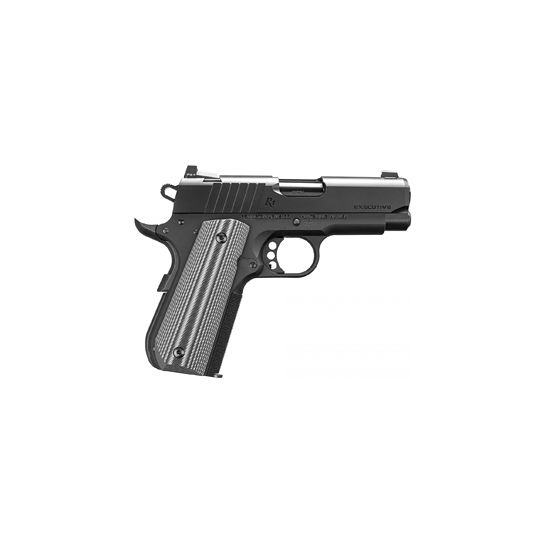
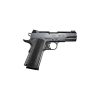
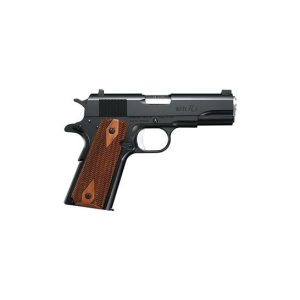
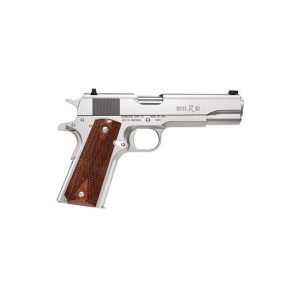
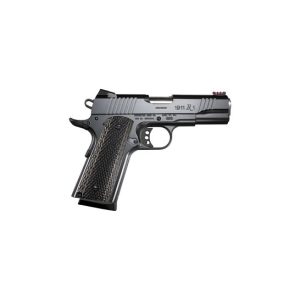
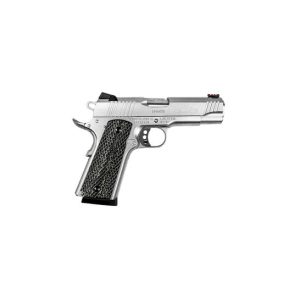
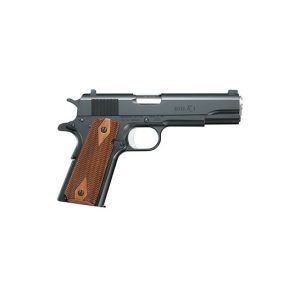
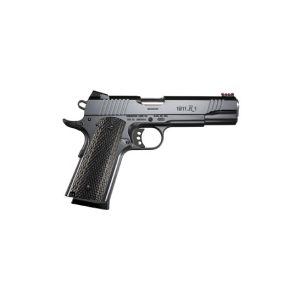
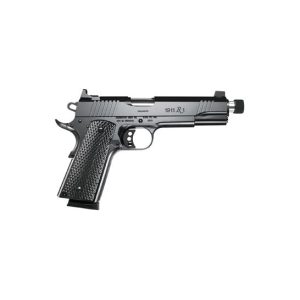
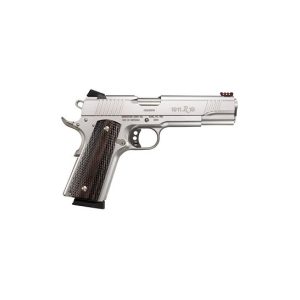
Reviews
There are no reviews yet.